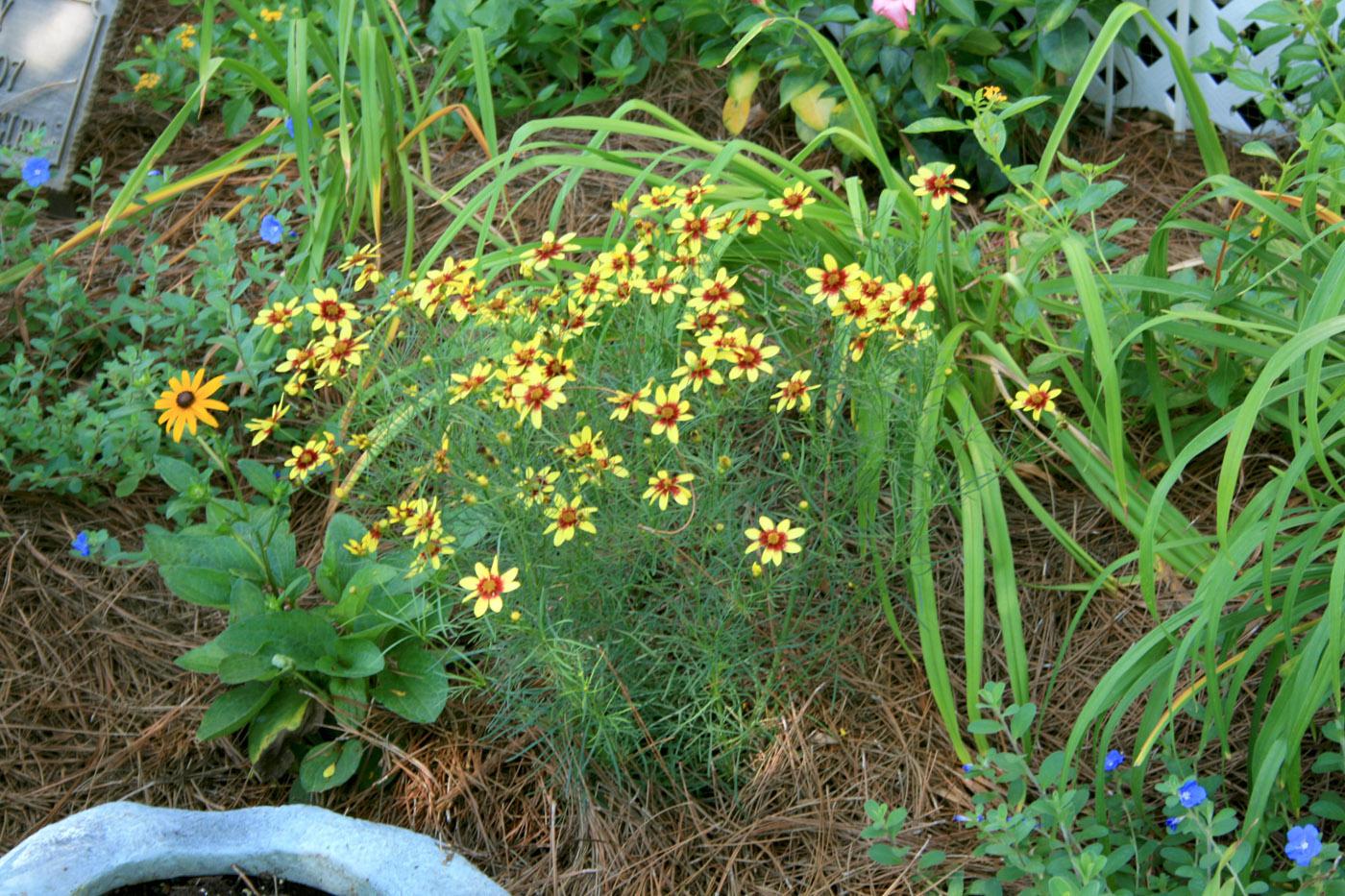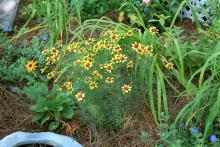Information Possibly Outdated
The information presented on this page was originally released on July 12, 2011. It may not be outdated, but please search our site for more current information. If you plan to quote or reference this information in a publication, please check with the Extension specialist or author before proceeding.
Beautiful coreopsis are great garden choices
When the heat makes gardeners want to stay indoors, it’s nice to have reliable, flowering plants that keep on looking good even when they don’t get a lot of attention.
The landscape performance of thread-leaf coreopsis, or Coreopsis verticillata, has made these plants outstanding choices for season-long color. And since it is an easy-to-grow, flowering perennial, beginner gardeners can have success almost immediately.
Coreopsis’ flowering is non-stop, covering the plants with a profusion of bright yellow and gold blooms. And Coreopsis verticillata is much longer-lived than the other perennial varieties of coreopsis.
The selections Moonbeam and Zabreb have been the mainstays of thread-leaf coreopsis for years. These have very dependable flowering that first begins in mid-spring and continues to fall.
A recent introduction is Route 66, which has thread-like bright green foliage of a soft, fern-like texture.
The 2-inch yellow flower has a bright red splotch surrounding the central cone. This red splotch seems to bleed outward into the yellow petals, and like snowflakes, no two are identical. When temperatures start to cool in the fall, red becomes the main petal color.
Route 66’s clumping growth habit produces sturdy stems to hold the flower display. It will grow up to 2 feet tall and wide. While its best garden and landscape performance is in full sun, Route 66 makes for a nice shade garden plant as well. In the shade, the habit becomes open and airy.
I like the combination of Route 66 with yellow Zahara zinnia and Blue Daze evolvulus.
Thread-leaf coreopsis have few insect and disease pests. Like many of the flowering perennials we grow in Mississippi, the plant is susceptible to crown rot. To help prevent this problem, you must plant in well-drained soils. Consider using raised beds.
Thread-leaf coreopsis prefer even and consistent soil moisture. They tolerate the hot, dry weather we have been experiencing so far this summer. During periods of extreme drought, be sure to provide supplementary irrigation to keep the plant blooming.
Feed with a water-soluble, 20-10-20 or 20-20-20 fertilizer every other week throughout the growing seasons to maintain nutrition levels.
Coreopsis verticillata require little maintenance once established. They do not require deadheading, which is good because deadheading the great number of flowers produced would be an impossible task. The only time you prune it is to cut it back to about 6 inches in the fall.
Divide thread-leaf coreopsis every three or four years by digging the entire plant up and slicing it in half or quarters with a sharp spade or shovel. Replant immediately or share extras with neighbors.








